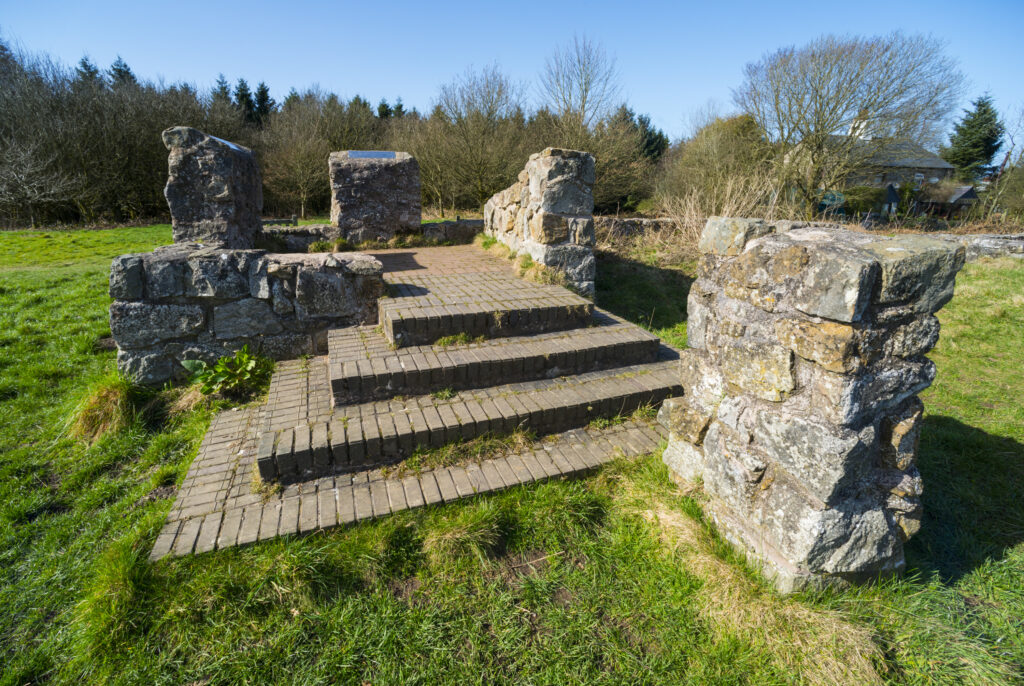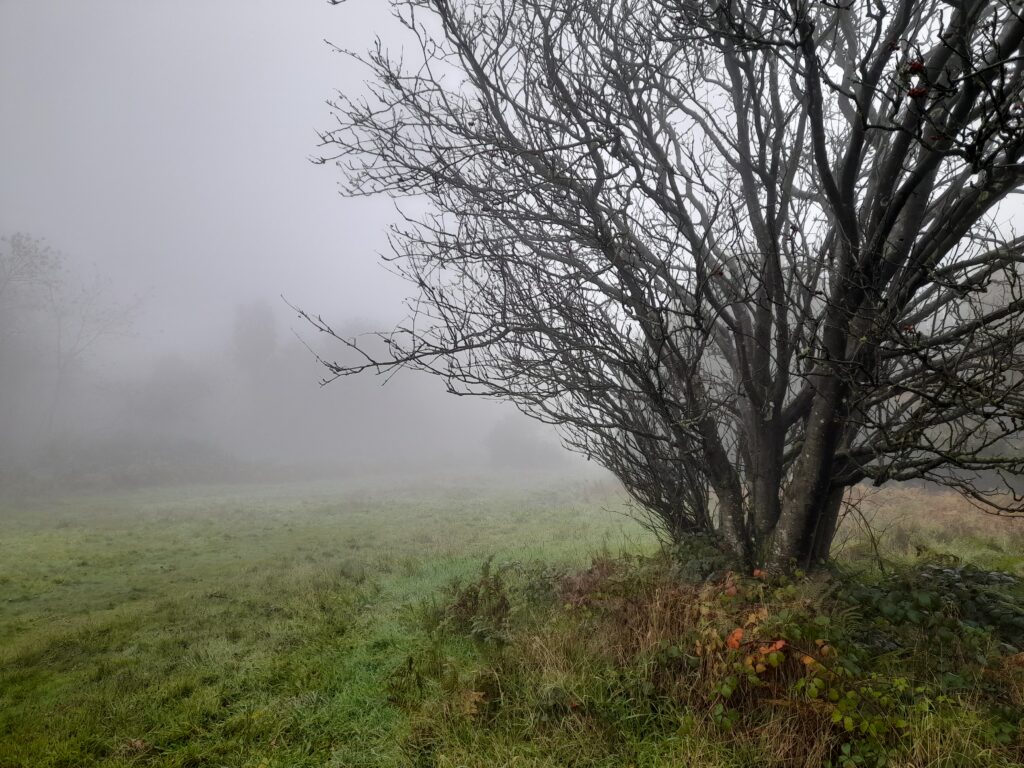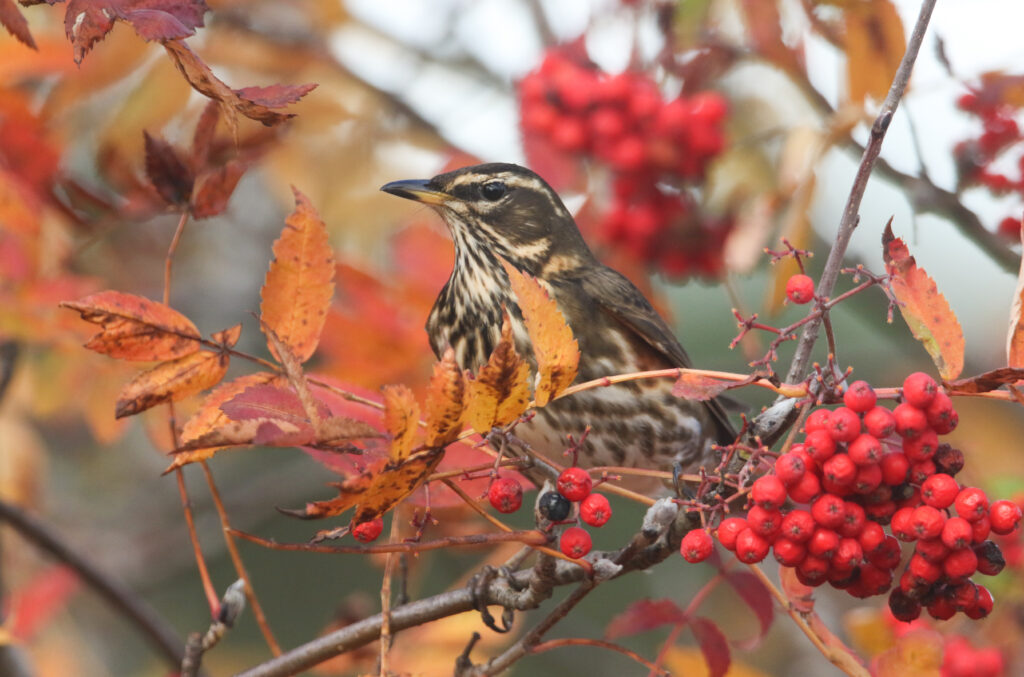Ed walks the remains of an historic Shropshire racecourse and finds you can bet on the rowan tree for a bumper crop.
This story begins on a bright afternoon in early September. The rowan trees on Old Racecourse Common in Oswestry were laden with berries. The smaller branches on each tree were arching over with the sheer weight of this year’s crop. The fruit hung in great bunches, shining scarlet red like cherry lips in a sweet shop window.
I first came to Racecourse Common as a student but then I did not return for many years. Now I am part of the team tasked with caring for the site and have found myself becoming increasingly captivated by its peculiar charm. Throughout the 18th and 19th centuries the figure- of-eight racecourse was a busy place. Being located very close to the border, the race meets were a place where the English gentry would pit their best horses against those owned by Welsh noblemen. The events were known for being raucous affairs with much drinking and merriment, in total contrast with the sense of tranquillity that pervades here now.
A number of local residents still have commoner’s rights to graze livestock or cut firewood on the Racecourse. When I visited, the talk amongst the commoners was that the bumper crop of berries was the sign of a hard winter to come. A soft mast year is when trees produce a super-abundance of berries and fruit. It is yet another example of the synchronicity and natural cycles that underpin planet earth and that we still don’t fully understand.
Grandstand view
By mid-October, the countryside has mellowed to an autumnal palette of ochre and gold. Once again, I drive up the long straight road out of Oswestry alongside the old estate wall. The Racecourse sits atop a hill known as Horns of the Buck, at around 1,000 feet above sea level. As I get higher, I find myself surrounded by a dense and swirling mist. Leaving the car, I head for the remains of the grandstand that was located near the finishing post. The grass beneath my feet is drenched, each blade glistening with water droplets.

These days the grandstand is nothing more than a few stone pillars and some steps leading up to a former viewing platform. But from here, looking up the course, it isn’t difficult to imagine the sound of hoofbeats thundering across the springy turf. Normally from this point, there are views towards distant Welsh mountains and the Shropshire Hills. But today my visible world has been reduced to a matter of paces rather than miles. The thick clag obscures the colour of foliage and fruit and the rowan trees growing on the common take the form of pencil sketches. It has the effect of emphasising the neatly domed architecture of the crown, with so many stems reaching skywards.
Pagan protection
It is only when I get close to one of the trees that the berries come into view. Overnight frosts have caused them to soften to the texture of candle wax. On each berry, located opposite the stem, is a five-pointed star shape. It was the presence of this ancient wiccan symbol, combined with the bright red colouration of the berries, that led to the rowan being one of the most sacred trees in British folklore. It is said that the tree has great powers to protect against witchcraft and malevolent spirits. As a result, a sprig or cross made of the timber would traditionally have been carried as a talisman.
The rowan tree is also known as the mountain ash, highlighting its preference for growing in high places. As I am re-tracing my steps through the fog, using the scattered trees as way-markers, I hear a sound in the sky above me. I can just make out a small flock of goldfinches bouncing along. Winter is a tough time for small birds and the fruits of the rowan trees are a feast not to be missed. I can see snuffle holes in the earth banks around the trees. By night old brock too has been gorging himself on the fallen berries. Soon raiders from the east will arrive on the common to enjoy their share of the bounty. They will arrive under cover of darkness in the form of redwings together with their cousins, the fieldfares. These striking species of winter thrush are well-known for their love of rowan berries.

Do one thing for wildlife this month
Do you have space for a little rowan tree in your garden? Or do you own or manage land where hedges or individual trees could be planted to help boost biodiversity, air quality and wellness? It is very easy to start growing your own local provenance trees from berries and seeds (such as acorns). For tips on how to get the best results, please visit; https://treecouncil.org.uk/wp-content/uploads/2021/09/Seed-Gathering-Season-growing-trees-from-seed.pdf
In each issue, WW! nature expert and Shropshire Council’s Parks and Greenspace Officer Edward Andrews looks at the changing seasons.
You can follow Ed on X: @shropshirewild






